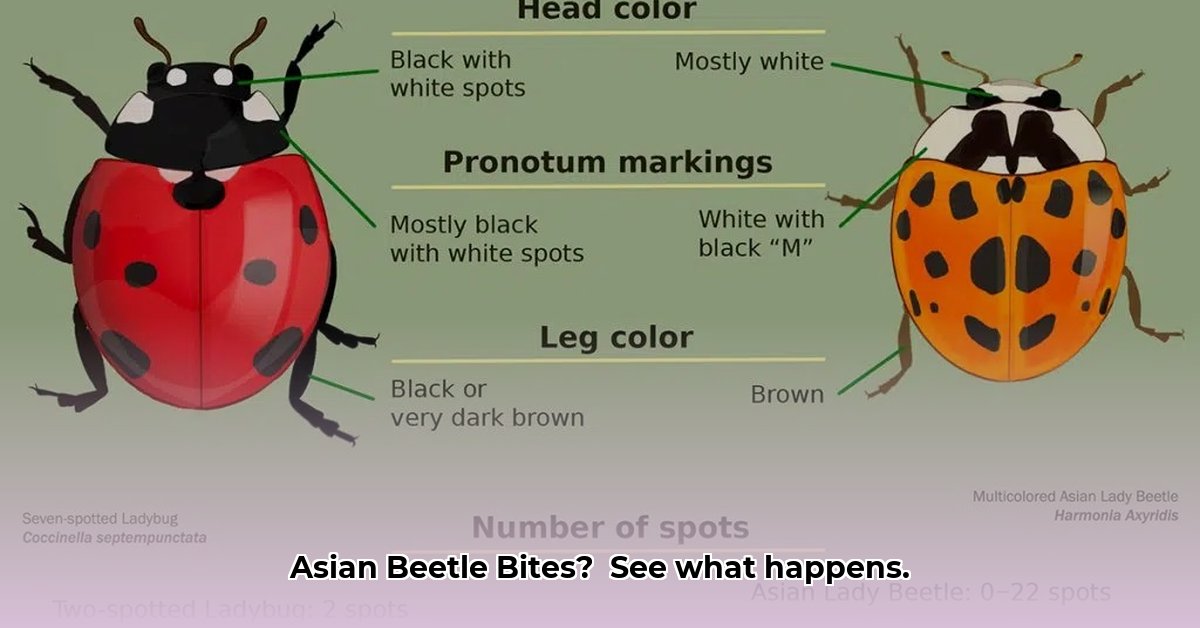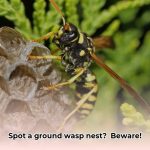Understanding Asian Beetle Bites
Those familiar orange and black beetles swarming around in autumn are likely Asian lady beetles. While they primarily seek shelter in warm homes, they can bite, causing irritation. This guide provides comprehensive information on Asian beetle bites, including identification, treatment, and prevention strategies.
What Does an Asian Beetle Bite Look and Feel Like?
An Asian beetle bite often resembles a small mosquito bite—a tiny red mark, sometimes slightly raised, accompanied by mild itching and redness. The bite itself feels like a pinch. Some individuals might experience more intense itching, swelling, or a small cluster of bumps if the beetle bit multiple times. While generally mild, reactions vary, with some people barely noticing the bite.
Allergic Reactions to Asian Beetle Bites
While most reactions are mild, some individuals may experience an allergic reaction, characterized by:
- Increased swelling and redness: Localized swelling beyond a typical bite.
- Hives: Itchy, raised welts appearing around the bite or elsewhere on the body.
- Respiratory symptoms: Runny nose, watery eyes, coughing, or wheezing, similar to other allergen reactions.
- Rare cases: Anaphylaxis, a severe reaction involving difficulty breathing, facial/throat swelling, dizziness, and a rapid drop in blood pressure, requires immediate medical attention.
Treating an Asian Beetle Bite: A Step-by-Step Guide
- Remove the Beetle: Gently brush the beetle away. Avoid squashing it, as this can release a smelly, staining yellowish fluid.
- Cleanse the Bite: Wash the area thoroughly with soap and water.
- Apply Antiseptic (Optional): Consider applying a mild antiseptic like rubbing alcohol or hydrogen peroxide to further prevent infection.
- Soothe the Bite: Apply a cold compress to reduce swelling and itching. Hydrocortisone cream, aloe vera gel, or calamine lotion can provide further relief. Ongoing research suggests some natural remedies may also be helpful.
- Avoid Scratching: Resist the urge to scratch to prevent infection and promote healing.
Preventing Asian Beetle Bites: Effective Strategies
Identifying Asian Lady Beetles vs. Ladybugs
Mistaking Asian lady beetles for ladybugs is common. Here’s how to differentiate them:
- “M” or “W” Mark: Asian lady beetles often have a distinct black “M” or “W” shaped mark behind their head.
- Color: Asian lady beetles are typically orange or red, sometimes black, with varying numbers (0-22) of black spots.
- Behavior: Asian lady beetles are more prone to swarming and seeking indoor shelter, especially during autumn.
Keeping Asian Beetles Out of Your Home
- Seal Entry Points: Seal cracks and gaps around windows, doors, and utility lines. Ensure screens are intact and fit tightly.
- Minimize Attractants: Light-colored surfaces may attract beetles. Ongoing research is exploring the role of fragrances in attracting them.
- Natural Repellents: Although their effectiveness requires more research, some natural repellents like citronella and peppermint oil might deter beetles.
Personal Protection
- Avoid Handling: Refrain from directly handling beetles. Wear gloves if necessary.
- Protective Clothing: When outdoors during peak beetle season (fall), wear long sleeves and pants to minimize exposed skin.
When to Seek Medical Attention
Most Asian beetle bites cause only minor, temporary discomfort. However, promptly seek medical attention if you experience:
- Significant swelling
- Difficulty breathing
- Dizziness
- Hives spreading beyond the bite area
- Any signs of infection (increased redness, swelling, pus)
- Any symptoms suggesting an allergic reaction
While this guide provides current best practices based on available research, our understanding of Asian beetle behavior and effective prevention strategies is constantly evolving. For personalized advice, consult with a healthcare professional. They can offer tailored recommendations based on your specific situation. Remember, awareness and prompt action are key to managing these occasional pests effectively.
- Grass Forever in Livermore: Your Guide to Artificial Turf - April 22, 2025
- German Roaches vs. American Roaches: Key Differences and Control - April 22, 2025
- 150+ Flowers That Start With S: A Comprehensive Guide - April 22, 2025










